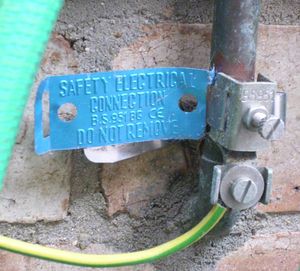Bathroom electrics
There are extra considerations for electrical wiring in a bathroom.
Article currently incomplete.
Zones
Bathrooms are divided into zones for electrical purposes.
Zone 0
- The interior of the bath or shower
- Electrical appliances here must be IPX7
- Electrical appliances here must run on 12v maximum SELV
Zone 1
- area directly above zone 0, upto a height of 2.25m above the bath or shower
- Electrical appliances must be SELV with the transformer in zone 3 or beyond
- Electrical appliances must be IPX4 or better
Zone 2
- area beyond zones 0&1, extends 60cm horizontally and upto 2.25m vertically beyond zones 0&1.
- Also area within 60cm of sinks, plus area directly below this
- Electrical appliances must be IPX4 or better
- Electrical appliances here must run on SELV wth transformer in zone 3 or beyond
Zone 3
- zone 3 ceased to exist in 2008 with the 17th edition of the wiring regs.
- area beyond zone 2, extending to 2.4m horizontally and 2.25m vertically.
- No appliance IP requirement
- Some appliances are marked unsuitable for bathrooms
- Some appliances are not thus marked, but are still unsuitable. CRT TVs are one example.
- Shaver units permitted
- SELV appliances permitted
Unzoned
- Outside zone 3
- Under the bath if a tool is required to gain access
- Non-selv portable appliances must be physically prevented from entering zone 3
Supplementary bonding
Why do it, when required
What to bond
Cable size
Connector types
Other bonding options, eg bonding outside the room, soldered copper pipe etc
Showers
Section to be written.
Installing mains electrics in showers is definitely frowned upon. But remarkably, it has been done!
